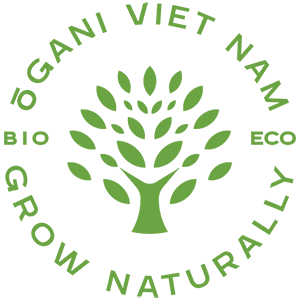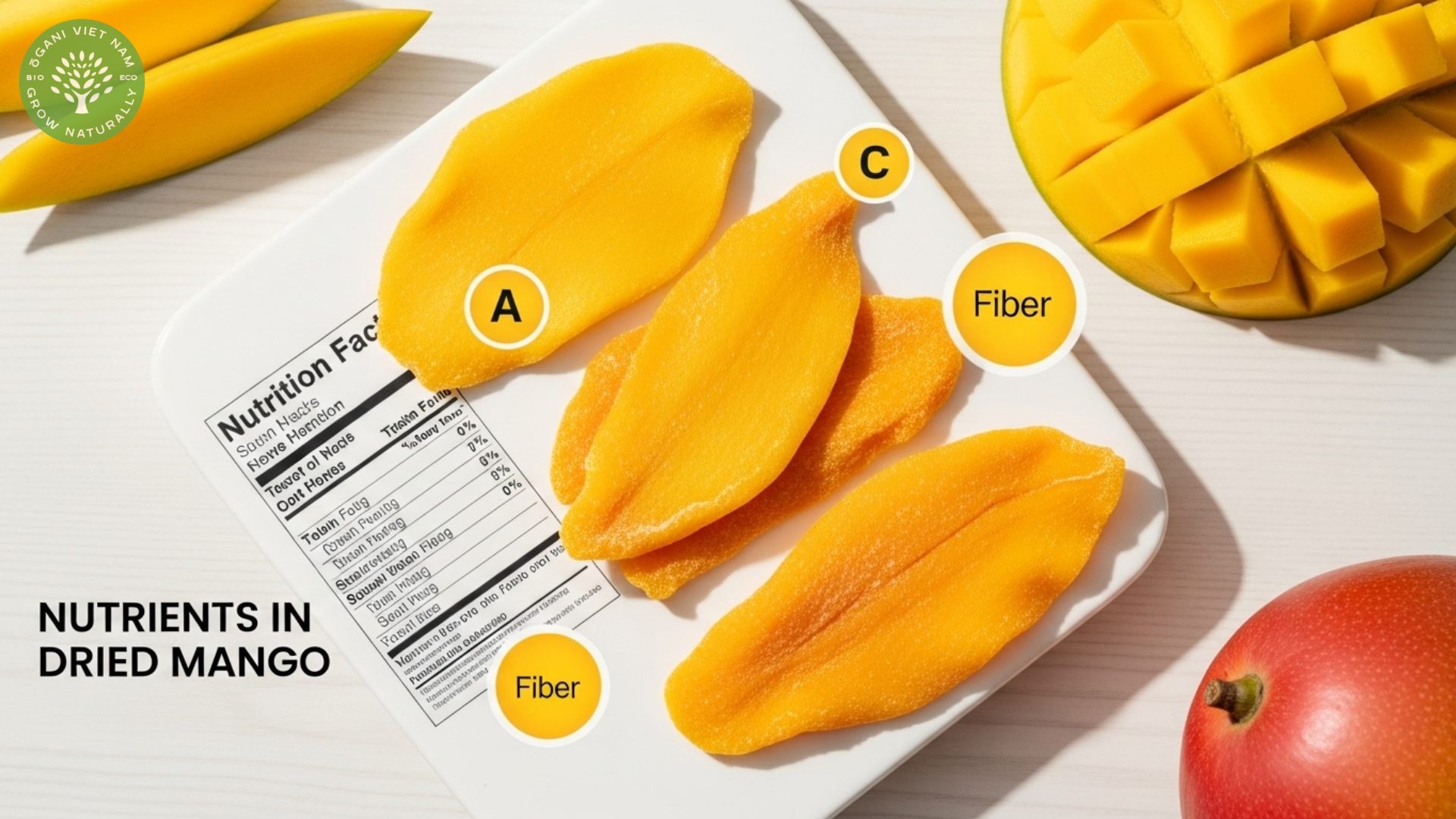Nutrients in dried mango include essential vitamins A and C, dietary fiber, potassium, and natural antioxidants, though the dehydration process concentrates both beneficial compounds and natural sugars. At Ogani VN, we’ve analyzed the nutritional profile to help you make informed choices about incorporating this tropical treat into your diet.
Key nutrients in dried mango: vitamins and minerals
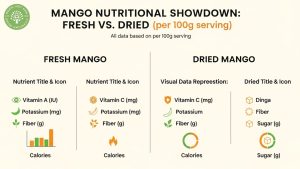
Dried mango serves as a concentrated source of several vital nutrients that support overall health. The dehydration process removes water while preserving most vitamins and minerals, creating a nutrient-dense snack option.
Vitamin A stands out as one of the most abundant nutrients, with a 100-gram serving providing approximately 54% of your daily requirement. This fat-soluble vitamin supports eye health, immune function, and cellular growth. The beta-carotene content gives dried mango its vibrant orange color while acting as a powerful antioxidant.
Vitamin C remains present despite the drying process, though at reduced levels compared to fresh mango. A typical serving delivers about 15-20% of your daily vitamin C needs, supporting collagen synthesis and immune defense. We’ve noticed that unsulfured dried mango varieties tend to retain more vitamin C than those treated with sulfur dioxide.
Potassium content reaches impressive levels in dried mango, with 100 grams containing roughly 325mg. This essential mineral supports heart health, muscle function, and proper fluid balance. The concentration makes dried mango particularly beneficial for athletes or anyone needing electrolyte replenishment.
Folate, iron, and magnesium round out the mineral profile, contributing to energy metabolism and cellular function. The iron content, while modest, becomes more bioavailable when consumed with vitamin C-rich foods.
Caloric content and macronutrient breakdown
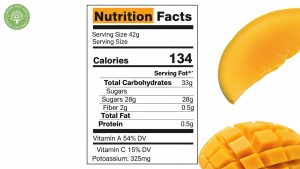
Understanding the macronutrient composition helps you incorporate nutrients in dried mango appropriately into your meal planning. The caloric density differs significantly from fresh fruit due to water removal.
A standard 42-gram serving contains approximately 134 calories, making it a moderate-calorie snack option. The majority of these calories come from carbohydrates, specifically natural fruit sugars. This concentrated energy source can provide quick fuel for physical activities or mental focus.
Carbohydrate content dominates the macronutrient profile, with about 33 grams per serving. These carbs consist primarily of natural fructose, glucose, and sucrose – the same sugars found in fresh mango but in concentrated form. The sugar concentration reaches approximately 66-70 grams per 100 grams, significantly higher than the 13-14 grams found in fresh mango.
Protein content remains minimal at roughly 1-2 grams per serving, while fat content stays below 1 gram. This makes dried mango primarily a carbohydrate-based energy source rather than a complete protein or healthy fat provider.
The glycemic index of dried mango falls into the moderate range, causing a more gradual blood sugar rise than pure sugar but faster than complex carbohydrates. We recommend pairing dried mango with protein or healthy fats to slow sugar absorption.
How nutrients in dried mango support digestive health
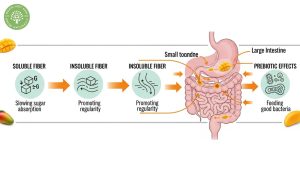
Soluble and insoluble fiber content in dried mango
Understanding the soluble and insoluble fiber content helps maximize the digestive benefits of dried mango. Each serving provides approximately 2-3 grams of dietary fiber, contributing meaningfully to your daily fiber intake goals through this dual-fiber combination.
The soluble fiber component in dried mango helps slow sugar absorption, potentially moderating blood glucose spikes after consumption. This water-soluble fiber also supports healthy cholesterol levels by binding to bile acids in the digestive tract. The pectin content, naturally preserved from fresh mango, contributes significantly to the soluble and insoluble fiber content profile, with soluble fiber making up roughly 40% of the total fiber.
Insoluble fiber provides the remaining portion, adding essential bulk to stool and promoting regular bowel movements. The concentrated nature of dried fruit means you’re getting more total fiber per volume compared to fresh alternatives, though portion sizes typically remain smaller. This balance of soluble and insoluble fiber content makes dried mango particularly effective for comprehensive digestive support.
Prebiotic properties and gut health benefits
The fiber-rich composition of dried mango acts as a prebiotic powerhouse, feeding beneficial gut bacteria essential for optimal health. These microorganisms play crucial roles in immune function, mood regulation, and nutrient absorption throughout the digestive system. Regular consumption of fiber-diverse foods like dried mango supports microbiome diversity and intestinal health.
However, the concentrated sugar content means moderation remains essential for gut balance. Excessive consumption could potentially feed harmful bacteria alongside beneficial ones, emphasizing the importance of balanced intake within an overall healthy dietary pattern.
Protective nutrients in dried mango: antioxidants and compounds
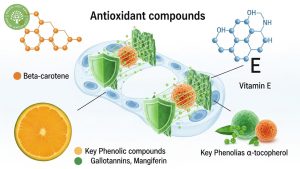
Dried mango retains many antioxidant compounds from fresh fruit, though concentrations vary depending on processing methods. These powerful molecules help protect cells from oxidative stress and may reduce chronic disease risk.
Beta-carotene serves as the primary antioxidant, converting to vitamin A in the body while providing cellular protection. The orange pigmentation directly correlates with beta-carotene levels – deeper colors typically indicate higher concentrations.
Phenolic compounds, including gallotannins and mangiferin, remain present after drying. Research suggests these compounds may support heart health and provide anti-inflammatory benefits. However, some heat-sensitive antioxidants may be reduced during the dehydration process.
Vitamin E, though present in smaller amounts, contributes to the overall antioxidant capacity. This fat-soluble vitamin works synergistically with other antioxidants to enhance their protective effects.
We’ve observed that freeze-dried mango tends to retain more antioxidants than heat-dried varieties, though both methods preserve significant beneficial compounds compared to many processed snacks.
Nutrients in dried mango versus fresh mango comparison
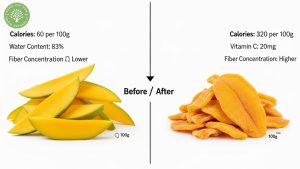
The nutritional transformation from fresh to dried mango creates both advantages and considerations for health-conscious consumers. Understanding these differences helps optimize your dietary choices.
Fresh mango contains approximately 60 calories per 100 grams compared to 300-320 calories in dried mango. The water removal concentrates all nutrients and calories roughly 4-5 times, including both beneficial compounds and natural sugars.
Vitamin C levels decrease significantly during drying, with fresh mango providing about 36mg per 100g while dried versions contain 15-25mg. Heat and oxygen exposure during processing contributes to this reduction, though meaningful amounts remain.
Fiber concentration increases in dried mango due to water removal, providing more fiber per gram than fresh fruit. However, the smaller serving sizes typical of dried fruit may result in similar absolute fiber intake between fresh and dried options.
The satiety factor differs considerably between forms. Fresh mango’s high water content promotes fullness with fewer calories, while dried mango’s concentrated nature may lead to overconsumption before satiety signals activate.
Glycemic response varies as well, with dried mango potentially causing faster blood sugar rises due to concentrated sugars and reduced fiber-to-sugar ratios per serving.
Frequently Asked Questions
Is dried mango healthier than candy? Yes, dried mango provides vitamins, minerals, fiber, and antioxidants that candy lacks, though both are high in sugar. The nutrients in dried mango offer genuine health benefits beyond empty calories.
How much dried mango should I eat daily? We recommend limiting portions to 1-2 servings (20-40 grams) due to high sugar content. This provides beneficial nutrients while managing caloric intake.
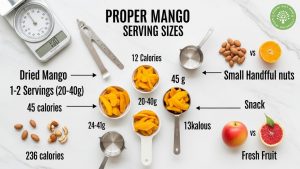
Does dried mango help with constipation? The fiber content can support digestive regularity, but the high sugar concentration may cause digestive discomfort in sensitive individuals if consumed excessively.
Can diabetics eat dried mango? People with diabetes should consume dried mango cautiously due to concentrated natural sugars. Pairing with protein and monitoring blood glucose response is advisable.
Are sulfured or unsulfured dried mangoes better? Unsulfured varieties typically retain more vitamin C and avoid potential sulfite sensitivities, though both provide core nutritional benefits.
Making the most of dried mango’s nutritional benefits
The nutrients in dried mango offer a convenient way to boost vitamin A, potassium, and fiber intake while satisfying sweet cravings naturally. While the concentrated sugars require mindful portion control, the antioxidants and essential minerals make dried mango a nutritious choice compared to processed snacks.
At Ogani VN, we believe understanding nutrition empowers better food choices. Consider incorporating high-quality dried mango into your balanced diet as an energizing snack or recipe ingredient. Browse our premium dried fruit selection to discover sustainably sourced options that maximize both flavor and nutritional value for your healthy lifestyle.
Read more:
- Dried Mango Nutrition Facts: Complete Guide To Calories, Benefits & Health Impact
- Best Dried Mango No Sugar Added: Premium Quality Guide
- Calories In Dried Mango No Sugar Added: Complete Nutrition Guide
- Dried Mango Nutritional Value: Complete Health Guide
- Nutrients In Dried Mango: Complete Nutritional Guide
